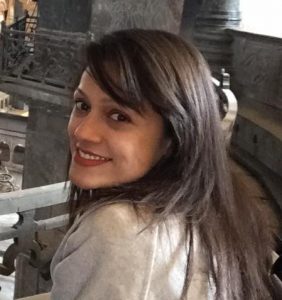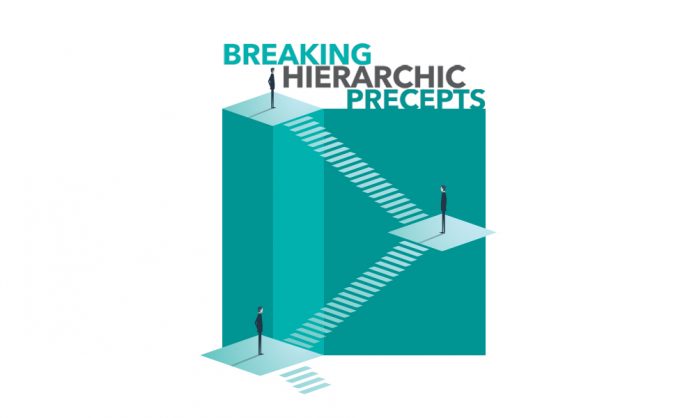As originally published in Synergyzer Annual 2020
Leading creative professionals give their views about how the emergence of digital advertising will affect the conventional role of Creative Director (CD) and Executive Creative Director (ECD).
HIRA MOHIBULLAH
Executive Creative Director – BBDO Pakistan

The pace of digital advertising has given birth to more linear structures versus the vertical structures of traditional advertising. How and into what will the Creative Director position evolve?
This is a very relevant question for me personally, since it comes at a time when BBDO has internally merged its digital and conventional resources, allowing for the exchange of talent and expertise within the system. As the industry evolves and lines blur between different disciplines, it’s increasingly important for us to approach work in a more holistic manner.
Since more human resources are required to deliver for the digital (advertising) medium, higher supervisory roles are being diluted and are being amalgamated into the creative workforce with the CD’s and ECD’s role also evolving. How do ECD’s see their growth?
While umbrella brand-building for clients remains an integral part of the JD (job description), our role now is also centered on driving the agency’s brand in the right direction. Moreover, the pace at which the definition of creativity is changing, both in terms of mediums and output, dictates that more control be fueled into the Creative Director position, giving way to a quick-churn model that optimizes creative efficiencies.
As BBDO Pakistan, we have expanded our client base owing to our “most-awarded, most-effective creative team” brand mark, which was only possible with a vision that starts vertically from the top.
SHAHERYAR GHAYAS
Chief Creative Officer – MADNEST
Executive Creative Director – FISHBOWL

The pace of digital advertising has given birth to more linear structures versus the vertical structures of traditional advertising. How and into what will the Creative Director position evolve?
In the interest of delivering quality in crunch time, creative top guns roll their sleeves up and go hands-on, regardless if they are working in a conventional ad agency or a digital one. We must get one thing straight: The pace of advertising will not dictate the hierarchy at work; the quality of creative output will. At most, a fast-paced environment impacts the approach creative leaders may take to prototype ideas and optimize the use of resources, so the creative output is not compromised – rather than make leaner teams. The point is: A lean team does not always promise quality output; but an optimized creative process does. This rouses the need for creative leadership to have the insight to build up a creative process, or exhibit flexibility to go hands-on if and when required – all in the interest of the best creative output.
Pace has got nothing on the Creative Director.
Since more human resources are required to deliver for the digital (advertising) medium, higher supervisory roles are being diluted and are being amalgamated into the creative workforce with the CD’s and ECD’s role also evolving. How do ECD’s see their growth?
This scenario is the reason why silos have taken over. Digital agencies are churning out more work, diluting brand promise at every interaction. While conventional ad agencies, on the other hand, are equipped with Strategy departments, which communicate less frequently. With conventional agencies and digital agencies functioning independently (and not in tandem), there is a huge gap – a ditch – within which lies the brand. It’s time for consolidating the functions; conventional and digital teams need to be the same team. Ideas must be digital, by design.
Consolidating these two functions is a strategic decision advertisers i.e. clients need to make; it is choosing between quality and quantity. Consolidation will help them get both. In this ideal case, the Executive Creative Directors need to be leading the consolidation, with thought leadership that transcends mediums – this is where their growth is, which stems from equipping themselves with such expertise. All the more reasons why the Creative Director/ECD role is one of the most important roles in the foreseeable optimistic future.
SHARJEEL AHMED
Creative Director – Manhattan Communications

The pace of digital advertising has given birth to more linear structures versus the vertical structures of traditional advertising. How and into what will the Creative Director position evolve?
With the digital revolution mercilessly breaking the dogma of hierarchies at a constant speed, it is becoming important for every one of us to evolve in order to survive. The role of Creative Director has to develop similarly, and as Heraclitus once said, “The only constant in life is change.” The position of CD will evolve into a more challenging one where they have to give creative solutions acceptable and relevant in today’s age.
CD’s may have to unlearn and start again – their experience is, however, a silver lining.
Since more human resources are required to deliver for the digital (advertising) medium, higher supervisory roles are being diluted and are being amalgamated into the creative workforce with the CD’s and ECD’s role also evolving. How do ECD’s see their growth?
An ECD or a CD or CCO, for that matter] is in itself a very limiting designation – a badge and a dead-end for any Creative. Yet the digital revolution has changed that, leading to more growth opportunities for the top creative hierarchy. What I mean to say is that embracing the revolution may enable them to transform their brand knowledge and creative techniques to a whole new world where the audience behaves, talks and looks at things differently. Therefore, what they ultimately need to figure out is a way to creatively place themselves in the lives of millennials and the generations to come.
SIDRA SALMAN
Executive Creative Director – Synite Digital

The pace of digital advertising has given birth to more linear structures versus the vertical structures of traditional advertising. How and into what will the Creative Director position evolve?
Creative Director, sigh. Perhaps it has been the most misused title in Pakistan’s advertising industry in the last 10 years. Everyone is a Creative Director these days. We have Creative Directors with less than 5 years of experience, ECD’s with no international awards, and Chief Creative Officers over a team of 3 people. It is ridiculous, and clients have stopped trusting these titles. They now know that agencies are just putting these fat titles against man hours to rip them off. Painful!
I don’t see any evolution really, but because of this very ‘bandar baant’ of this otherwise sacred title, it is going to get extinct very soon. Clients already have the attitude, “Keep your title to yourself, what is the idea and when will you deliver it?”
You are talking about the birth of linear structures or whatever and I find it really funny! There are no structures really. These tiles and reporting lines are usually a result of retention negotiations between the Seth and the creatives. We all, at the end of the day, report to the guy who signs our salary checks, and that is the only structure I know and I am fine with it. The birth of good creative work is not happening, except for a few exceptions of course, and that is what makes me worried. We really need to work towards earning back the clients’ confidence in the local creative industry and everything else from structures, titles, roles etc. will follow. There are so many clients who are only working with the local agencies because India is closed, and that is what should keep us up at night!
And please! let’s not blame the pace of the digital advertising for this catastrophe. It is the result of our combined incompetence, acceptance of mediocrity, coupled with laziness and greed of people sitting at the top in agencies. We have made this industry a laughing stock.
Since more human resources are required to deliver for the digital (advertising) medium, higher supervisory roles are being diluted and are being amalgamated into the creative workforce with the CD’s and ECD’s role also evolving. How do ECD’s see their growth?
What growth do ECD’s in our country want now? They already have the title with no earth-shattering work, they get substantial pay check against their title, get to be featured in award juries; what growth do they want from the outside world now? I mean, the only growth they need is the growth in their own acumen. High time! These fat creative titles should now realize that their growth from here on is in ground-breaking work only! It is time that they come down from their high horses and do some real work. The just-out-of-school creatives have already started making these boardroom souvenirs run for their money, and you can call it role dilution or whatever, those with the fat titles have brought it upon themselves with their constant mediocrity and complacency.
I simply believe in three things;
– An idea can come from anywhere
– A leader does not need any validation of a title
– Creativity is a collaborative process
For these reasons, I keep my title parked in my work station drawer. It is perhaps for the business people to bill against my work and for head hunters to spot me. Titles have never added any value in the creative process and they never will!
TEHMINA FATIMA
Creative Director – East River

The pace of digital advertising has given birth to more linear structures versus the vertical structures of traditional advertising. How and into what will the Creative Director position evolve?
In my opinion, the organizational structure of any advertising agency needs to have at least three basic layers: Senior management, mid-level and entry-level. This kind of hierarchy is necessary because only this provides growth opportunities for those at mid and entry levels while also giving them the guidance and support from senior management, which in this case comes from the Creative Director (CD).
Regardless of the type of advertising agency – traditional or digital – the basic role of CD has not and should not change. Every agency needs to have experience and skill to be the guiding force behind the Creative department – like any other department – and train young minds by developing and sharpening their creative skills, which is where the CD comes in. So, basically a CD’s role evolves with time to include mentorship, guidance and inspiration.
Since more human resources are required to deliver for the digital (advertising) medium, higher supervisory roles are being diluted and are being amalgamated into the creative workforce with the CD’s and ECD’s role also evolving. How do ECD’s see their growth?
While keeping in mind that the need of the hour is to deliver a higher amount of work in a very short span of time, the way to go about it is not to dilute the role of the CD, rather to hire more people at entry- and mid-levels who the CD can train and develop into competent team members. By diluting or removing supervisory roles, agencies are risking quality control. A CD who is involved in daily tasks will not have the time to focus on the bigger picture, nor will a team under training have someone to go to when in need of guidance or inspiration.
As far as an ECD’s role is concerned, it is true that after a certain point growth opportunities seize to exist for such senior positions, but such opportunities might also cease to exist for those at other levels if they are not constantly updating themselves. Every Creative, whether an ECD or a junior resource, will become redundant if they are unaware or resistant towards new and relevant advertising practices.
Growth, unfortunately, for most people in Pakistani advertising only means promotions.
YAWAR IQBAL
Executive Creative Director – JWT-Grey

The pace of digital advertising has given birth to more linear structures versus the vertical structures of traditional advertising. How and into what will the Creative Director position evolve?
Your question is based on the assumption that the digital workforce comprises of youngsters – millennials – mostly and that its horizontal structure may have impacted the role of a Creative Director or an ECD like me.
I do not agree with this because regardless of where we are working – any space that gives significance to an idea; whether it’s an ad agency, a design house, a fashion house or even a data company – you need ideation which in turn requires a leader and that leader is the creative head. That person’s designation can be an Executive Creative Director, a Chief Creative Officer, or a Creative Director. Primarily, the job is to direct the team and move them in the direction that is right for the company, business and people around you.
Therefore, as I said earlier, no matter the times we are in, the importance of creative leadership cannot be undermined as that goes from top to bottom and horizontally across categories. So, we need smart thinkers who turn these ideas into tangible forms and for that I do not see the Creative Director’s role getting irrelevant in any part of the world. Every business needs significant ideas and creative leadership, which come from the person sitting at the top in a creative unit.
Since more human resources are required to deliver for the digital (advertising) medium, higher supervisory roles are being diluted and are being amalgamated into the creative workforce with the CD’s and ECD’s role also evolving. How do ECD’s see their growth?
We need to understand the core of the business of advertising.
The products that we are known for are idea, ideation, and creativity. Hence, no matter the times we are in; be it the past, present or future; if ever machines take over or the medium of release changes, what will stay relevant is the core skillset of a person who knows how to come up with an idea.
Agreed, the medium of release has evolved over time – formerly, we were releasing ads on television and now short films are being released on YouTube; this change does not impact good ideas or great stories. You can take the example of India: It is their storytelling that is impactful; whether released on cinema, or on Netflix; the change in mediums has not affected the quality of their ideas or stories.
Similarly, for a creative person; the medium they are working on – traditional or digital – does not challenge their core competency. One has to evolve – we are not pandas. At the same time, we like to hear great stories, so the crux is that we have to come up with ideas for those stories and that’s what we are here for.
Stay Tuned to Synergyzer!
